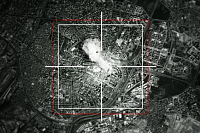In my previous blog, I pointed out that a good test solution can verify not only that the network is operating within performance limits of the ITU-T and 3GPP but also to give insight into just how much margin there is before a problem might occur. Regular monitoring also allows the operator to spot drifting behaviour and address the underlying cause before it affects their customers.
Ideally, one would want to look at the performance of the entire network including the Radio Units (RUs) by measuring the RF signal over the air (OTA). While it is tempting to represent the network synchronization as a single number, this is deceiving. It is best to visualise the measurement on a time graph which gives the user an idea of the dynamic characteristics of the synchronization. It is also important to make these measurements periodically and to regularly make measurements for extended periods of time so that slow wandering fluctuations can be seen.
Fig.1 shows an example of a short (10 minute) OTA measurement of synchronization on a 5G transmission. It demonstrates excellent performance with synchronization to about 200ns of UTC and a small variation of less than 40ns.

Fig.1 - within limits
Fig.2 shows the performance of another network with similarly excellent synchronization. Within the measurement period, the sync has a mean of 330ns from UTC and a peak-to-peak change of 35ns. However, in this case, an observer might question the long-term wander of the synchronization. Have we just captured a measurement that is mid cycle in a much larger variation?

Fig.2 - potential trend
Because OTA measurements can be made without access to the network hardware, it is a straightforward process to survey a number of base stations in your network quickly. You can also look at the synchronization of base stations in other networks since they too can create interference in your network.
In my next blog, I look at how wander can be evaluated on an OTA measurement.
Bryan Hovey
Product Manager
Related product: Sentinel
Related blog: Synchronization Monitoring: the fuel gauge for mobile networks and 5G OTA Wander Mask: Fact or Myth?
Related literature: Timing and Synchronization Library



































































